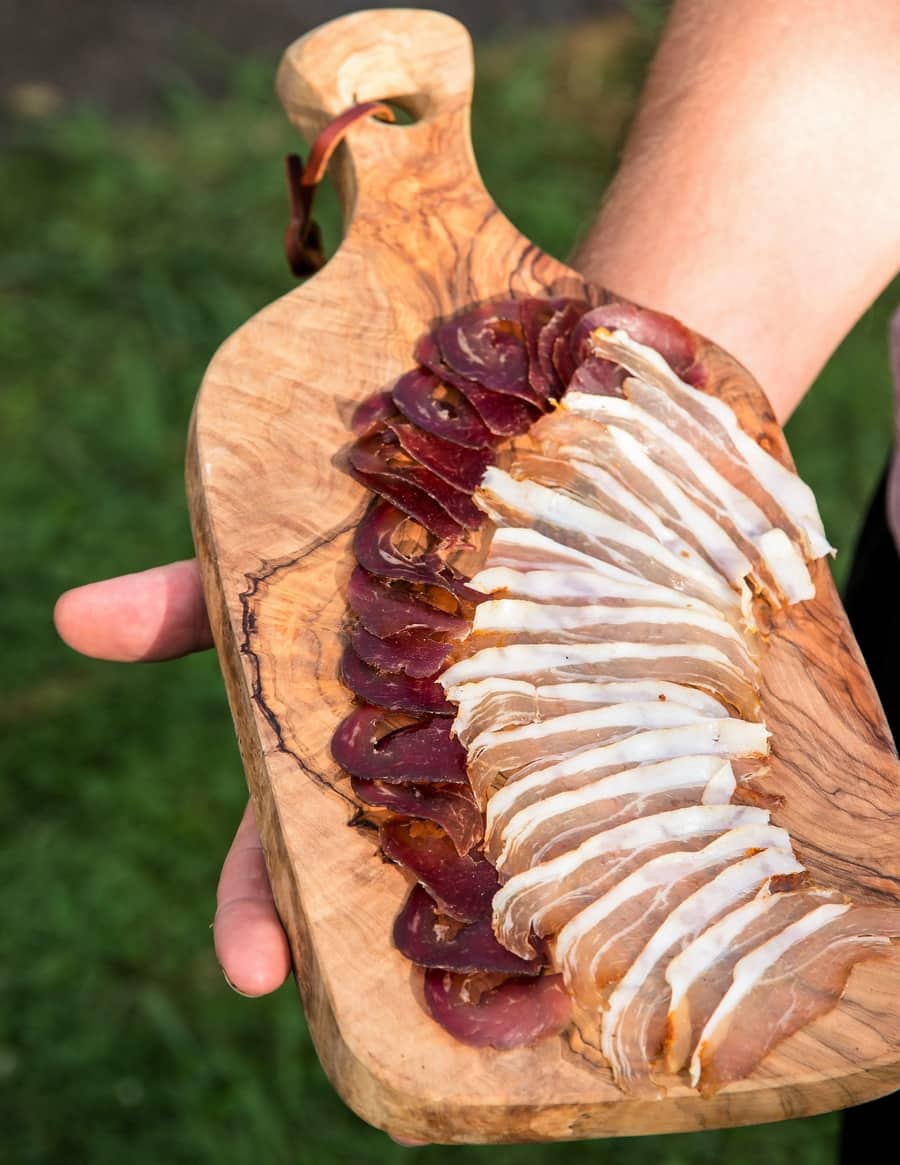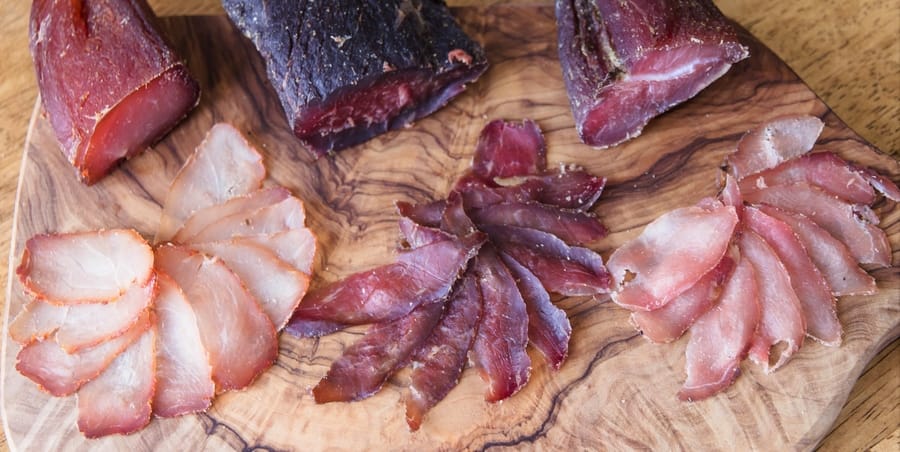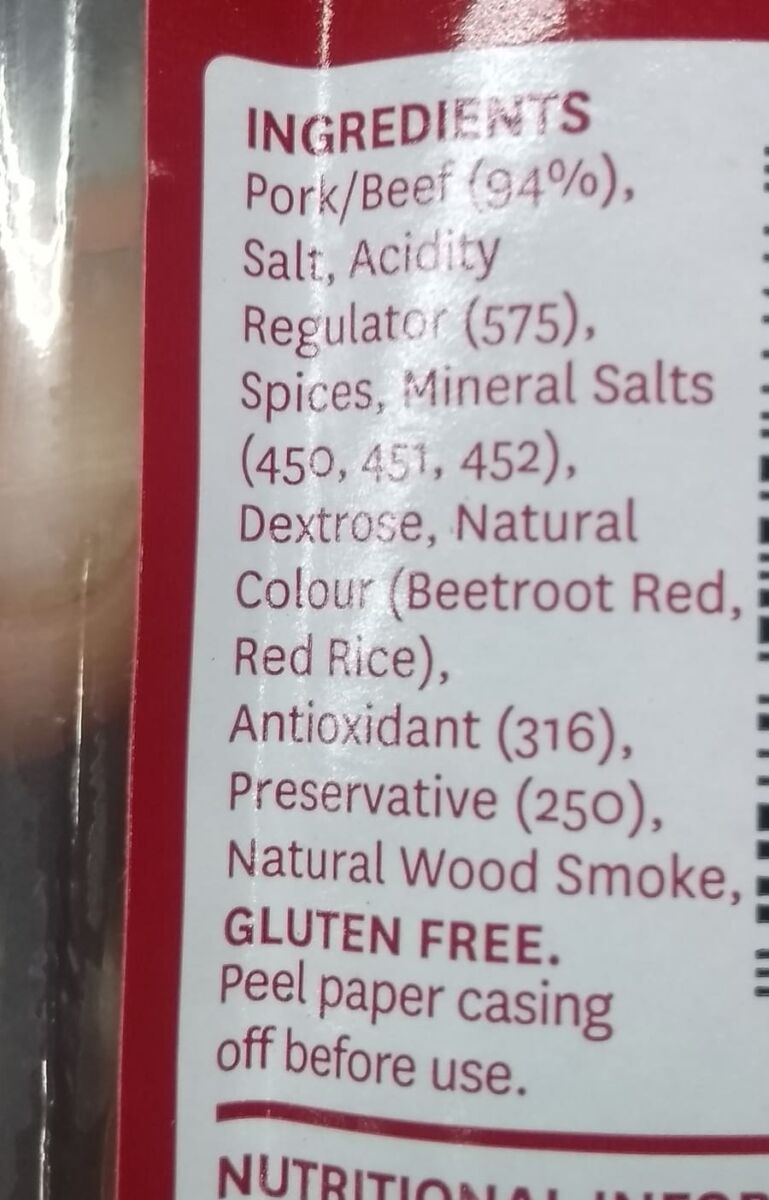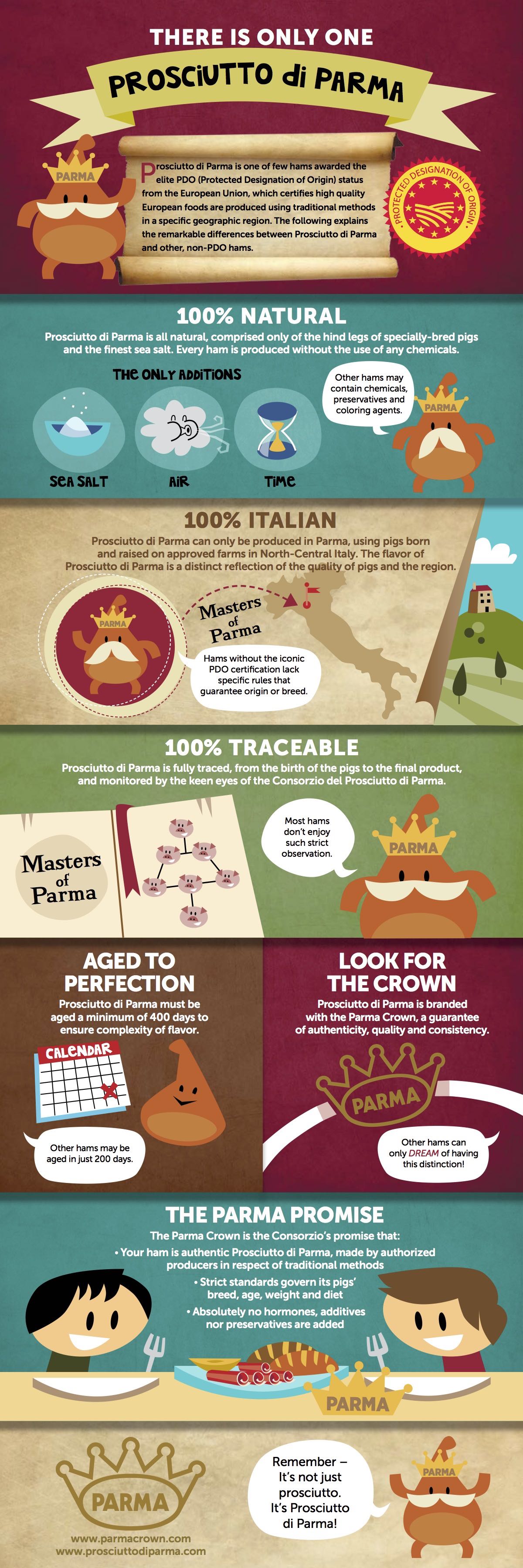Charcuterie and processed meat are quite poorly defined because most of them have been deemed different by different organizations and people.
Charcuterie can be dry-cured meat such as dry-cured salami and whole muscle. Like genoa salami, prosciutto, and pancetta.
It’s also traditionally ham, rillettes, pates, and offal-based cooked meats from a French charcuterie perspective.
It involves a process but may not fit into the loose definition of ‘processed’ meat.
In Italy, some aspects of charcuterie overlap with salumi. Salumi includes whole muscle cuts and salami.
Defining Processed Meat,
The reason that it’s hard to find a hard and fast definition for processed meat is that there isn’t one. This term is defined a little differently by everyone. The American Institute for Cancer Research defines processed meat as “meat preserved by smoking, curing or salting, or addition of chemical preservatives.”
The World Health Organization has a slightly broader definition: “meat that has been transformed through salting, curing, fermentation, smoking, or other processes to enhance flavor or improve preservation.”
https://www.scientificamerican.com/article/what-s-the-definition-of-processed-meat
A more accurate definition of processed meat would be:
Meat that is either salt dry or wet cured, commercially made with additives such as preservatives, emulsifiers, and binders.
I’ve found this video useful for this discussion. A researching journalist looked at the definition of ‘processed meat’ in the UK vs. Europe. I’ve provided the video at a point where watching a few minutes will explain a lot about ‘processed’ meat.
If you had a look at the video, you’ll see reference to E223 – otherwise know as – Sodium Metabisulfite. Here is further info on this additive, remembering this is only one type and is vastly different to other preservatives like E251, Sodium Nitrate (more on this later).
A more accurate definition of charcuterie meats would be:
Salt, spices, and meat are crafted by hand in a small artisan style. Either dried, smoked or cooked – this includes preserving in jars.
With some insight, I’ll give you my opinion on whether or not charcuterie is processed meat (here is another relevant article I wrote about Nitrates and Cured Meat) and what processed meat and charcuterie are.
Way before I even decided to do a whole website on cured meat, I looked at how many cultures across the globe consume a lot of charcuterie (charcuterie cured meats are expensive; here I wrote why) or cured meat.
Dry-cured meat is probably the cornerstone of most charcuterie and charcuterie boards. Dry-cured meat is generally always inspired initially by classic Italian Salumi.
Salumi is mainly the major cut of pork that gets salt-cured and dried out long enough to be preserved and intensify the flavor; it has been around for a few thousand years (Roman Empire Times)

Also, salumi includes salami, but the strict definition of dry-cured salami is in the traditional Italian way.
I wrote a page on salumi vs. salami and the differences between them in detail; please find that page here.
Charcuterie and Process Meat in Detail

Firstly, there is no ‘agreed’ definition of processed meat, making it somewhat ambiguous. Meat that isn’t fresh anymore is vaguely what these organizations came up with. That is a massive category.
Since I’ve been studying cured meats for a few decades, I’ll give you my interpretation of processed meat.
What I think Processed Meat Is
You generally find processed meat in western supermarkets like hot dogs and ham from the deli. These have sodium nitrates in them most of the time (just like I sometimes add a small amount of nitrates to dry-cured meat)
This below ‘salami’ package, is not charcuterie (did you know if charcuterie is gluten-free, I wrote about this in detail).
Salami should take months to make, this can be made in a few days with rapid acidification to preserve meat slightly.

At least it’s mainly meat.
Some regulations say sausages for grilling only need to be 50% meat!
They also add a lot of other ‘preservatives’, flavor enhancers, and ingredients, which are the numbers (since it’s hard to put the full chemical names on the package).
They are also cooked and often hot-smoked as well. Sometimes, cold-smoked depends on the product in question.
This is quite different from dry-cured meat, which is generally the most basic of things. Prosciutto, for example, has salt, pork leg, nitrates, and nitrites (for the commercial types I have seen). It is dried for 12 months at minimum in Italy, thinly sliced, and savored.
But these classic Italian recipes do not involve cooking or smoking. Drying preserves the meat (I wrote about how this happens here) and intensifies the flavor.
Charcuterie Dry Cured Meat
Like the Italian Classics which are dry salt-cured:
- Proscuitto – Pork Leg
- Pancetta – Pork Belly
- Coppa – Upper Neck Some Loin
- Guanciale – Jowl Jaw
- Spalla – Shoulder (bone-in or out)
- Lardo – Fat
- Lonza – Loin
Parma Ham – Pork & Salt
Parma Ham is an interesting dry-cured meat that has been around for hundreds, if not thousands, of years in Italy. You take a quality pig leg, rub it with salt, and ensure the peak has had a good diet, including the leftover byproduct of making cheese.
Then, you dry out for a minimum of 12 months in an environment with a high enough humidity so the meat doesn’t dry out. Natural white mold grows on it, otherwise known as penicillin, and once it’s lost 35% or more of its weight, the slicing is thin and savory.

Courtesy of: ParmaCrown.com
Here is a link to the process of Parma Ham in Detail from the above institution (no affiliation, if you were wondering, apart from buying and eating it).
There is a process for making this type of dry-cured meat, but I don’t think it is included in the above-mentioned definition of processed meat, which has led to some confusion.
Nitrates / Nitrites & Dry Cured Meat
Most of the time, dry-cured salumi contains a very low amount of nitrates/nitrites, but you create more in your body or eat more nitrates/nitrites in green vegetables. This quote explains it better.
From all the furore around processed meat, you may imagine it is the major source of nitrates in our diet. But in fact only around 5% of nitrates in the average European diet come from this source, while more than 80% are from vegetables. Vegetables acquire nitrates and nitrites from the soil they grow in – nitrates are part of natural mineral deposits, while nitrites are formed by soil microorganisms that break down animal matter.
http://www.bbc.com/future/story/20190311-what-are-nitrates-in-food-side-effects
Scientific Study of Parma Ham
An interesting study of a ‘Processed by Hand dry-cured meat, Parma Ham.
There is scientific evidence that this is easier to digest and may actually be good for you.
https://www.prosciuttodiparma.com/wp-content/uploads/2019/07/Parma-Ham-Well-being-and-diet.pdf
If you want an overview of Dry Curing, I have a comprehensive page on my process here.
If you want to try dry curing in your kitchen fridge, I have an easy guide here.

Tom Mueller
For decades, immersed in studying, working, learning, and teaching the craft of meat curing, sharing the passion and showcasing the world of charcuterie and smoked meat. Read More
